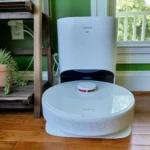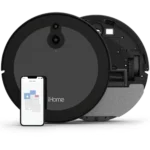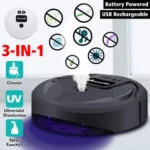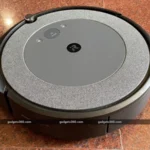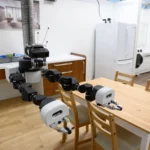Keeping our homes clean is essential for a healthy and comfortable living environment. However, deciding on the right type of vacuum cleaner can be a daunting task. With the prevalence of both traditional and robot vacuum cleaners in the market, it can be perplexing to determine which one is right for your needs. Traditional vacuum cleaners have been around for decades and are known for their deep cleaning abilities, low initial cost, and easy maintenance. On the other hand, robot vacuum cleaners have risen in popularity due to their smart features, compact and lightweight design, and effortless cleaning capabilities. In this article, we will compare the pros and cons of both traditional and robot vacuum cleaners and help you determine which type of vacuum cleaner is best suited for your specific needs.
Pros of Traditional Vacuum Cleaners
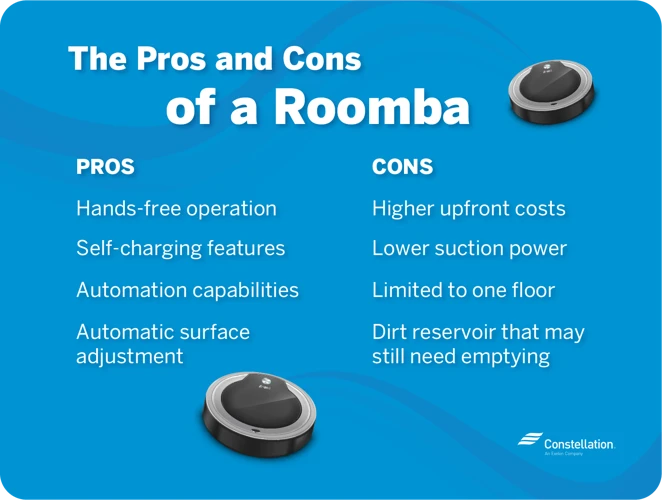
When it comes to keeping a clean home, one of the most important tools in your arsenal is a vacuum cleaner. While robotic vacuums may be the new trendy option, don’t overlook the benefits of traditional vacuum cleaners. There are several advantages to using a traditional vacuum cleaner that make it worth considering. In this section, we’ll explore the pros of traditional vacuum cleaners and help you decide if it’s the right cleaning solution for your needs. For a detailed comparison of robotic vacuums and traditional vacuum cleaners, check out our ultimate robot vs vacuum comparison guide.
Effective deep cleaning
Traditional vacuum cleaners use powerful suction to effectively remove dirt and debris from carpets, rugs, and floors. They come with various attachments like crevice tools and brushes that help in deep cleaning different surfaces. Additionally, traditional vacuums usually have stronger motors compared to robot vacuums, making them more effective in removing embedded dirt and debris.
However, it’s important to note that not all traditional vacuum cleaners are equal in terms of deep cleaning. Some high-end models like the Dyson Cyclone V10 and the Shark Navigator Lift-Away have powerful suction and advanced filtration systems that can capture even the finest dust particles. On the other hand, cheaper models may not provide the same level of deep cleaning and may require multiple passes to fully clean a surface.
In contrast, robot vacuum cleaners rely more on their brushes and rollers to agitate the dirt and debris from carpets and floors. While they may not be as powerful as traditional vacuums, they can still effectively pick up surface-level dirt and dust.
When it comes to deep cleaning, traditional vacuums have an edge over robot vacuums. However, high-end robot vacuums like the iRobot Roomba s9+ and the Neato Botvac D7 have advanced mapping and navigation systems that allow them to clean more efficiently and cover a larger area. Additionally, some robot vacuums also come with stronger suction and advanced brush systems that make them more effective in deep cleaning.
Here’s a comparison table to summarize the pros and cons of traditional and robot vacuum cleaners when it comes to deep cleaning:
| Traditional Vacuum Cleaners | Robot Vacuum Cleaners | |
|---|---|---|
| Pros | Effective deep cleaning with powerful suction and various attachments | Efficient cleaning with advanced mapping and navigation systems |
| Cons | May be time-consuming to use and bulky to store | May not be as effective in deep cleaning compared to traditional vacuums |
Ultimately, the choice between a traditional and a robot vacuum cleaner when it comes to deep cleaning will depend on your needs and preferences. If you have a large home with multiple rooms and carpets, a traditional vacuum cleaner may be the better choice. However, if you have a small apartment with mostly hardwood floors, a robot vacuum cleaner may be more convenient and efficient. It’s important to consider factors like budget, home size, flooring type, and presence of pets before making a decision.
Lower initial cost
Traditional vacuum cleaners are well-known for their effectiveness in deep cleaning of floors and carpets, along with their lower initial cost as compared to robot vacuum cleaners. While robot vacuum cleaners typically cost more to purchase, traditional vacuum cleaners are a great option for those looking to save money on their initial investment.
To illustrate this point, let’s compare the average prices of both types of vacuum cleaners:
| Type of Vacuum Cleaner | Average Price |
|---|---|
| Traditional Vacuum Cleaner | $100-$500 |
| Robot Vacuum Cleaner | $300-$1000 |
As you can see, traditional vacuum cleaners have a lower initial cost, which makes them a more budget-friendly option for consumers. However, it’s important to note that while robot vacuum cleaners may have a higher upfront cost, they may actually save you money in the long run due to their efficiency and smart features.
While lower in cost, traditional vacuum cleaners do have a number of drawbacks and limitations that should also be considered:
- They can be heavy and difficult to maneuver, making them less efficient and potentially causing strain or injury to the user.
- They require manual operation, which can be time-consuming and cumbersome, especially for larger homes or areas that need frequent cleaning.
- They don’t have any smart or automatic features, which means you have to be present and actively using the vacuum cleaner for it to work.
While traditional vacuum cleaners have a lower initial cost and are effective at deep cleaning, they do have their limitations. Robot vacuum cleaners may have a higher upfront cost, but they come with the added convenience of autonomous cleaning and smart features that can save you time and effort in the long run. It’s important to consider your specific needs and budget when choosing between the two options.
Easy maintenance
When it comes to maintaining traditional vacuum cleaners, the process is straightforward and uncomplicated. They usually come with few parts that require periodic cleaning or replacement, making them low-maintenance machines. Here are some of the easy maintenance steps:
| Maintenance Steps | Frequency |
|---|---|
| Cleaning the dustbin and filter | After every use |
| Changing the vacuum bag | When it’s full |
| Replacing worn-out brush roll | Every 6-12 months |
| Restoring vacuum suction power | Once a year |
Regular cleaning of the dustbin and filter is the most essential maintenance step for traditional vacuum cleaners. This not only enhances the suction power but also prevents the accumulation of a foul odor. Changing the vacuum bag when it’s full is equally important as it prevents clogging and preserves the machine’s performance.
As for the brush roll, it requires periodic replacement since it gets worn out over time, especially when you use it on carpets with long fibers. And since no machine will always perform at its best, restoring vacuum suction power once a year helps keep the machine operating at peak efficiency.
Easy maintenance is one of the advantages of traditional vacuum cleaners. With just a few steps, you can keep the machine in perfect condition for a long time, thereby ensuring its longevity and consistent performance.
Cons of Traditional Vacuum Cleaners
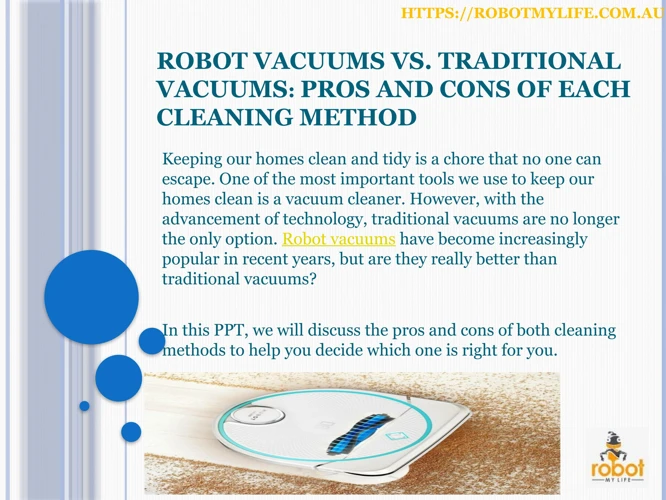
Cleaning your home is a necessary task but it can be a bit challenging if you don’t have the right tools to get the job done. While traditional vacuum cleaners have been around for decades and have proven to be effective, they are not without their drawbacks. As we dive deeper into the cleaning efficiency battle between robot and traditional vacuum cleaners, it’s important to consider the cons of the latter. Let’s take a closer look at some of the downsides of traditional vacuum cleaners that you should keep in mind before making a purchase.
Time-consuming cleaning process
Traditional vacuum cleaners are known for being powerful cleaning tools, but one of their downsides is the time-consuming cleaning process. Unlike robotic vacuum cleaners which can be set to operate autonomously, traditional vacuum cleaners require a user’s constant attention and effort to complete the cleaning task.
To start, users need to pull out the vacuum cleaner from its storage area, unwind the cord, and plug it into an appropriate electrical socket. They also need to dispose of the dirt collected from the vacuum bag, clean or replace filters or have them serviced, and store the vacuum accordingly after use. These steps can be cumbersome, especially if the cleaning area is large or if the vacuum cleaner is bulky and heavy.
Traditional vacuum cleaners come with additional attachments and accessories, which must be changed depending on the surface being cleaned. Users need to manually adjust the height level of the vacuum head when moving from one surface to another, such as from carpets to hard floors. This manual process can take a lot of time, especially when covering a large cleaning area.
While traditional vacuum cleaners are effective in removing dirt and debris, their lengthy cleaning process can take up significant time in a busy household or work environment. In contrast, robot vacuum cleaners can offer a more time-efficient cleaning option. By setting a cleaning schedule, users can have the robot do the cleaning tasks automatically and focus on other tasks.
While traditional vacuum cleaners are powerful cleaning tools, their time-consuming cleaning process can be a downside. This is where the efficiency of a robot vacuum cleaner makes a difference. With its autonomous features, it allows users to focus on their other tasks while the cleaning is being done. To learn more about the efficiency battle between robot and traditional vacuum cleaners, check out our article on Efficiency Battle: Robot vs. Traditional Vacuum Cleaners.
Bulky and heavy
When it comes to traditional vacuum cleaners, one of the main drawbacks is their bulkiness and heaviness. These devices are often designed with large motors and dustbins, which add to their overall weight and size. This can make them difficult to maneuver, particularly in smaller spaces or when trying to clean stairs.
To better illustrate the issue of weight and size, we can look at a comparison between two popular vacuum models: the Dyson Ball Animal 2 Upright and the Shark Navigator Lift-Away Professional. The Dyson Ball Animal 2 Upright weighs in at a hefty 17.35 pounds, while the Shark Navigator Lift-Away Professional is slightly lighter at 13.7 pounds. However, both of these models are still considered bulky and difficult to maneuver in areas with tight corners or angles.
In fact, the bulkiness of traditional vacuum cleaners can also make them difficult to store. These devices often require a significant amount of storage space, particularly if you need to keep them assembled rather than disassembled.
Pros of bulky and heavy traditional vacuum cleaners:
- Effective at picking up dirt and debris due to powerful motors and larger dustbins.
- May provide a better deep cleaning experience compared to smaller, lightweight options.
- Can last longer due to sturdier design and construction.
Cons of bulky and heavy traditional vacuum cleaners:
- Difficult to maneuver in areas with tight corners or angles.
- May cause strain or injury if lifted or moved incorrectly.
- Require a significant amount of storage space.
While traditional vacuum cleaners can provide an effective deep cleaning experience, their bulkiness and weight can make them difficult to use, store, and maneuver. Depending on your needs and preferences, you may find that a more compact and lightweight option, such as a robot vacuum cleaner, is a better fit.
No smart features
Traditional vacuum cleaners do not come equipped with smart features, which can be a disadvantage for those who value convenient and fast cleaning. Here are some of the smart features that robot vacuum cleaners have that are lacking in traditional vacuum cleaners:
- Remote control: Users can control the robot’s cleaning through a remote control or through their smartphone, making cleaning more manageable and efficient.
- Automatic charging: Robot vacuum cleaners can automatically detect when their battery is low and return to their charging dock to recharge themselves.
- Mapping technology: Many robot vacuum cleaners have mapping technology that allows them to remember the layout of a room, which saves time and energy on subsequent cleaning cycles.
- Voice control: With voice control, users can give commands to their robot vacuum cleaner through smart home devices, such as Amazon Echo or Google Home.
Without these features, traditional vacuum cleaners can be more labor-intensive and time-consuming to operate. Users have to manually control the vacuum over all areas of the room and frequently stop to adjust power settings, switch nozzles and other details. The lack of smart features can be a factor to consider when choosing between a traditional or robot vacuum cleaner.
Pros of Robot Vacuum Cleaners
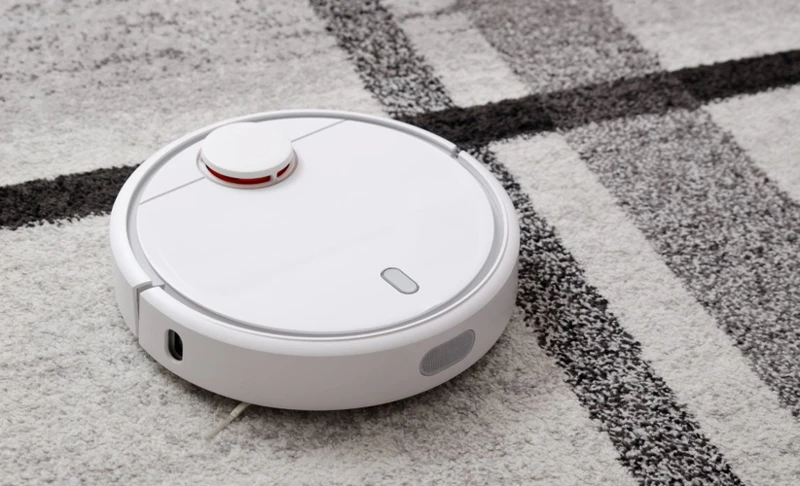
When it comes to cleaning, we all want a hassle-free and effortless experience. This is where robot vacuum cleaners come in. With their smart features and compact design, they offer several advantages over traditional vacuum cleaners. Let’s take a closer look at some of the pros of robot vacuum cleaners that make them a popular choice among busy homeowners. From effortless cleaning to advanced technology, there’s a lot to love about these innovative devices.
Effortless cleaning
One of the pros of using a robot vacuum cleaner is that it offers effortless cleaning. Unlike traditional vacuum cleaners that require physical effort to maneuver and push around, robot vacuums can clean your floors with minimal effort. All you need to do is program the device to clean at a specific time, and let it do its job while you attend to other tasks.
The robot vacuum cleaner provides convenience. You can simply set it and forget it. Once programmed, the robot vacuum cleaner can operate on its own without any input from you. You don’t have to manually control it, which frees up a lot of time and energy that you can use for other productive tasks.
Robot vacuum cleaners navigate around obstacles and furniture without user intervention. They come equipped with advanced sensors that enable them to detect objects in their path and navigate around them without causing any damage to the device or the furniture.
The robot vacuum cleaner can clean hard-to-reach areas. These vacuums are designed to reach tight spaces under furniture and other challenging areas that can be difficult to clean with a traditional vacuum cleaner. They can also detect and clean edges and corners with precision, leaving your floors spotless.
The robot vacuum cleaner is ideal for busy individuals. If you have a hectic schedule and don’t have time or energy to clean your floors regularly, the robot vacuum cleaner is a lifesaver. It can help maintain the cleanliness of your home without you having to lift a finger.
Effortless cleaning is a significant advantage of using a robot vacuum cleaner. With its advanced sensors and capabilities, this device can clean your floors without user intervention, making it a convenient and time-saving option compared to traditional vacuum cleaners.
Smart features
When it comes to smart features, robot vacuum cleaners have a clear advantage over traditional vacuum cleaners. Let’s take a closer look at some of the most notable smart features of robot vacuum cleaners:
| Smart Feature | Description |
|---|---|
| Wi-Fi Connectivity | Many robot vacuum cleaners can be connected to your home Wi-Fi network, allowing you to control the device using a mobile app. This means you can start or stop cleaning sessions, adjust suction power, and even receive notifications about the status of your device, all from your phone. |
| Voice Control | Some robot vacuum cleaners are compatible with popular voice assistants such as Amazon Alexa or Google Assistant. This means you can control the device using voice commands, making it even more convenient to use. |
| Mapping and Navigation | Many robot vacuum cleaners use advanced sensors and mapping technology to create a virtual map of your home. This allows the device to navigate around furniture, avoid obstacles, and follow a logical cleaning path, ensuring a more thorough and efficient clean. |
| Automatic Recharging | When the battery of a robot vacuum cleaner runs low, many models will automatically return to their charging dock and recharge themselves. This means you never have to worry about manually charging the device or interrupting a cleaning session. |
| Integration with Smart Home Ecosystems | Some robot vacuum cleaners can be integrated with other smart home devices such as security cameras or lighting systems. This means you can create custom routines or automations that involve multiple devices, making your home even smarter and more efficient. |
As you can see, robot vacuum cleaners offer a wide range of smart features that make cleaning more convenient, efficient, and customizable. If you’re someone who loves technology and wants to streamline your cleaning routine, a robot vacuum cleaner might be the perfect choice for you.
Compact and lightweight
When it comes to the pros of robot vacuum cleaners, their compact and lightweight design is a major advantage. Unlike traditional vacuum cleaners, which can be bulky and difficult to maneuver around tight spaces, robot vacuums are built with a sleek and slim design that enables them to easily fit under low-profile furniture and navigate around obstacles.
Robot vacuum cleaners are also much lighter in weight than traditional vacuums, making them easy to carry and move around as needed. This is especially important for those who live in multi-story homes or apartments, as carrying a heavy traditional vacuum cleaner up and down the stairs can be a daunting task.
In addition to their compact and lightweight design, robot vacuum cleaners also offer a hands-free cleaning experience, freeing up time and energy for other tasks.
However, it’s important to note that the compact and lightweight design of robot vacuums may come at a cost. Some models may sacrifice suction power for their smaller size, and others may have a smaller dirt collection bin, requiring more frequent emptying.
Despite this, the convenience of a robot vacuum cleaner’s design cannot be denied, making it a great option for those who prioritize ease of use and maneuverability.
Whether you choose a traditional or robot vacuum cleaner, it’s important to consider your individual needs and lifestyle to determine which one will work best for you. In the end, a clean home is the ultimate goal, and both types of vacuums can help you achieve that.
Cons of Robot Vacuum Cleaners

While robot vacuum cleaners have become increasingly popular, they are not without their downsides. It is important to weigh the pros and cons of these devices before making a purchase. Here, we will explore some of the disadvantages of robot vacuum cleaners and what you should consider before investing in one for your home. From higher initial cost to potential maintenance issues, the cons of these devices may surprise you. Let’s take a closer look at what you should be aware of.
Higher initial cost
When it comes to purchasing a vacuum cleaner, the cost is one of the most important factors to consider. Robot vacuum cleaners are undoubtedly more expensive than traditional vacuum cleaners. However, that additional cost may be worth it depending on your needs.
Let’s take a closer look at the price comparison between robot and traditional vacuum cleaners:
| Vacuum Cleaner Type | Price Range |
|---|---|
| Traditional Vacuum Cleaners | $30 – $800+ |
| Robot Vacuum Cleaners | $150 – $1,500+ |
As you can see from the table, the initial cost of robot vacuum cleaners is significantly higher than traditional vacuum cleaners. Robot vacuum cleaners have innovative technology and intricate parts that make them more expensive to manufacture.
For individuals on a tight budget, a traditional vacuum cleaner may be the more practical option as it has a lower initial cost. However, if you have a larger budget and want the latest and most convenient technology in home cleaning, you may prefer a robot vacuum cleaner.
It’s important to note that a robot vacuum cleaner may actually save you money in the long run. It can clean your home when you’re not around, which means you won’t have to pay for a cleaning service or take time out of your schedule to clean.
To sum up, while the higher initial cost of robot vacuum cleaners may deter some buyers, it’s important to weigh the investment with long-term benefits that it brings. Ultimately, the decision will depend on your personal preferences and budget.
Might miss hard-to-reach areas
When it comes to the cons of robot vacuum cleaners compared to traditional vacuum cleaners, one of the potential drawbacks is that they might miss hard-to-reach areas. Though they are designed to navigate around your home and clean as much as possible, there are certain spots that they simply may not be able to reach. Some examples include tight corners, spaces under furniture that are too small for the robot vacuum to fit under, and high shelves or other surfaces that the robot vacuum cannot climb.
While some robot vacuum cleaners are designed with stronger suction power and improved brush heads to tackle difficult spots, they may still struggle to reach all areas. This is particularly true for models with a round shape, as opposed to those with a more square or rectangular shape.
So, if you have a home with a lot of clutter or tight spaces that may be difficult for a robot vacuum to navigate, a traditional vacuum cleaner may be a better choice. Additionally, if you have high shelves or surfaces that require regular cleaning, a traditional vacuum with a detachable hose and various attachments will allow you to reach those areas more easily.
While robot vacuum cleaners can make life a lot easier by taking care of regular cleaning tasks, they may not be able to fully replace traditional vacuum cleaners in all cases. It’s important to consider your home’s layout and cleaning needs before making a decision.
Regular maintenance required
While robot vacuum cleaners offer ease and smart features, they do require regular maintenance to function effectively. This is an important factor to consider when choosing between traditional and robot vacuum cleaners.
Regular maintenance tasks for robot vacuum cleaners:
| Maintenance task | Frequency |
|---|---|
| Emptying dustbin | After every cleaning cycle or when full |
| Cleaning the filter | Every 1-2 weeks |
| Checking for stuck debris | After every cleaning cycle |
| Cleaning brushes | Every 1-2 weeks |
| Replacing the battery | When battery life starts to decrease |
The regular maintenance that robot vacuum cleaners require can be time-consuming and require additional effort. However, neglecting these maintenance tasks can affect their performance, reducing their effectiveness at cleaning. It is important to factor in the maintenance requirements when considering buying a robot vacuum cleaner.
On the other hand, traditional vacuum cleaners also require regular maintenance, but the tasks are comparatively simpler. Many models have washable filters, which reduces the cost and the need for regular replacements. Additionally, traditional vacuum cleaners do not require frequent battery replacements, which can be a significant cost with a robot vacuum cleaner.
Ultimately, the decision between robot and traditional vacuum cleaners depends on the individual’s preferences, lifestyle, and budget. While robot vacuum cleaners offer convenience, they also require regular maintenance. Consider these maintenance tasks before making a purchase decision.
Factors to consider when choosing between robot and traditional vacuum cleaners

As you weigh your options between a traditional vacuum cleaner and a robot vacuum cleaner, there are several important factors that you should consider. These factors go beyond the differences in cost and functionality and can help you make a more informed decision about which type of vacuum cleaner is best for your home. By taking into account the size of your home or room, the type of flooring, the presence of pets, and your budget, you can better determine which type of vacuum cleaner will effectively and efficiently clean your space. Let’s explore each of these factors in more detail to help you make the right decision.
Size of home/room
When it comes to choosing between a robot vacuum cleaner and a traditional vacuum cleaner, the size of your home or the room that needs cleaning is an important factor to consider. Here are some things to keep in mind:
- Large homes: If you have a large home with multiple floors or rooms, a traditional vacuum cleaner might be a better choice. Traditional vacuum cleaners typically come with a longer power cord than robot vacuum cleaners, which means you don’t have to keep moving the cleaner to different power outlets. Additionally, traditional vacuum cleaners are better at cleaning carpets and can handle larger debris.
- Small homes: If you have a small home or apartment, a robot vacuum cleaner might be the perfect choice. They are compact and lightweight in design, making them ideal for small spaces. Additionally, robot vacuum cleaners can navigate through tight spaces and are great for cleaning hard-to-reach areas like under furniture.
- Single rooms: If you only need to clean a single room, a robot vacuum cleaner can be a convenient choice. You can simply set it up and let it do its job without having to move it around. However, if you prefer deep cleaning or have a lot of pet hair or debris, a traditional vacuum cleaner might be a better option.
Keep in mind that regardless of the size of your home or room, both robot and traditional vacuum cleaners have their own advantages and disadvantages. It’s important to weigh these carefully before making a decision.
Type of flooring
The type of flooring in your home is an important factor to consider when choosing between robot and traditional vacuum cleaners. Each type of flooring requires different cleaning methods, and some vacuum cleaners may be better suited to certain flooring types than others.
Hardwood floors: Hardwood floors are beautiful and durable, but they require special care to keep them looking their best. Traditional vacuum cleaners are generally safe to use on hardwood floors, as long as they have a setting for bare floors. However, robot vacuum cleaners can also be used on hardwood floors, as they typically have sensors that prevent them from bumping into furniture and walls.
Tile floors: Like hardwood floors, tile floors can be cleaned with both traditional and robot vacuum cleaners. However, it is important to ensure that the vacuum cleaner has a setting for hard floors, as the bristles on some brush rolls can scratch the surface of the tiles.
Carpeted floors: Carpeted floors require more powerful vacuum cleaners to effectively remove dirt and debris. Traditional vacuum cleaners with powerful suction and brush rolls are typically best for cleaning carpets, as they can agitate the fibers and reach deep into the pile to remove dirt and debris. Robot vacuum cleaners may also be effective on carpets, but it is important to choose one with strong suction power and a brush roll designed for carpet cleaning.
Laminate floors: Laminate floors are similar in appearance to hardwood floors, but they are made of different materials and require different cleaning methods. Traditional vacuum cleaners with a setting for hard floors can be used on laminate floors, but care should be taken not to scratch the surface. Robot vacuum cleaners with sensors can also be used on laminate floors, but they may not be as effective at removing dirt and debris as traditional vacuum cleaners.
The type of flooring in your home is an important consideration when choosing between robot and traditional vacuum cleaners. Both types of vacuum cleaners can be effective on different types of flooring, but it is important to choose one that is specifically designed for the type of flooring in your home.
Presence of pets
When choosing between a robot and traditional vacuum cleaner, the presence of pets in your home is an important factor to consider. Both types of vacuums handle pet hair differently, so you need to choose the one that suits your needs.
Robot vacuum cleaners: If you have pets, in addition to vacuuming the floors, you want a vacuum that can remove pet hair from furniture, carpets, and other areas. Many robot vacuums come with tools designed for pet hair removal, such as brushes with rubberized blades that lift pet hair off surfaces and into the vacuum’s suction path. However, not all robot vacuums are well-suited for pet hair. Some machines struggle to pick up larger pieces of debris, which can cause pet hair to wrap around the brush roll, clogging the machine. Additionally, some robot vacuums have smaller dustbins that may require frequent emptying if you have a particularly furry pet. You need to look for a robot vacuum cleaner that has strong suction power and a large dustbin, and a bristle brush or rubberized brush to tackle pet hair.
Traditional vacuum cleaners: When choosing a traditional vacuum cleaner for a home with pets, power is everything. More powerful vacuums do a better job of agitating carpet fibers and pulling embedded pet hair to the surface, where it can be suctioned away. Upright vacuums with HEPA filters are particularly effective at capturing pet dander and other allergens, making them ideal for pet owners who struggle with allergies. However, traditional vacuum cleaners can be heavy and difficult to maneuver around furniture, especially if you have stairs. They are also typically louder than robot vacuums, which can be disturbing to pets.
To summarize, both robot and traditional vacuum cleaners offer pet-specific features and benefits, but you need to choose the vacuum cleaner that is best suited for your home and lifestyle. A helpful tool to compare the robot vs traditional vacuum cleaners for pet hair is a comparison chart:
| Robot Vacuum Cleaner | Traditional Vacuum Cleaner | |
|---|---|---|
| Effortless cleaning | X | |
| Smart features | X | |
| Compact and lightweight | X | |
| Higher initial cost | X | |
| Might miss hard-to-reach areas | X | |
| Regular maintenance required | X | |
| Can pick up pet hair effectively | X | X |
| Effective for cleaning carpets and furniture | X | X |
| May require frequent emptying | X | |
| May be loud and disruptive | X |
Consider your pet’s specific needs, as well as your cleaning preferences and lifestyle, to help you choose the vacuum cleaner that will meet your needs.
Budget
When it comes to choosing between traditional vacuum cleaners and robot vacuum cleaners, budget is an important factor to consider. The initial cost of the vacuum cleaner is just the beginning of the expenses that come with owning one. You need to consider the maintenance costs, the cost of accessories, and the cost of replacement parts.
Here is a breakdown of the costs associated with both traditional and robot vacuum cleaners to help you make an informed decision:
| Traditional Vacuum Cleaners | Robot Vacuum Cleaners | |
|---|---|---|
| Initial cost | Lower than robot vacuum cleaners | Higher than traditional vacuum cleaners |
| Maintenance cost | Simple and low cost | Requires more effort and cost |
| Accessories | Usually included with the vacuum cleaners | Additional cost for some accessories like virtual walls or extra brushes |
| Replacement parts | Easy to find and replace parts | May need to replace parts regularly which can be costly |
Traditional vacuum cleaners have a lower initial cost compared to robot vacuum cleaners. However, concerning their maintenance cost, while traditional vacuum cleaners require little maintenance and have low maintenance costs, robot vacuums require more effort and money to maintain.
Accessories such as brushes or virtual walls that are necessary for the robot vacuum cleaner may come with additional costs, which can easily add up. Also, replacement parts for traditional vacuum cleaners are easy to find and replace and the cost is not high, while robot vacuums may require more regular replacement of parts, which can be costly.
When it comes to budget, it is essential to consider not only the initial cost but also maintenance, accessories, and replacement parts costs that come with owning both traditional and robot vacuum cleaners.
Robot and Traditional Vacuum Cleaners: Which one is right for you?
Choosing between a robot and traditional vacuum cleaner can be a tough decision. However, the decision will depend on your needs, preferences, and lifestyle. Both types of vacuum cleaners have their advantages and disadvantages.
Traditional vacuum cleaners are ideal for those who have a large floor area and carpets that require deep cleaning or stubborn dirt and debris to be removed. They are also an excellent option for those who prefer a more hands-on approach to cleaning or are on a tight budget. Traditional vacuums have a lower initial cost and easy maintenance, making them a long-lasting and affordable investment. However, if you have a small apartment or a tight space, carrying a bulky and heavy vacuum cleaner around can be tiresome and time-consuming. Traditional vacuums also lack smart features that can make cleaning more efficiently and less demanding.
Robot vacuum cleaners are perfect for those who prefer to spend more time on other chores or leisure activities. They are also ideal for pet owners who struggle with pet hair, as the robot cleaners can effectively remove pet debris without human intervention. Robot vacuums are lightweight, compact, and can fit in tight spaces, making them an excellent option for those who have limited storage space. They feature smart sensors that help them navigate through furniture and other obstacles, making it easier to clean under and around objects. However, they’re challenging to clean, and the initial cost is higher than traditional vacuums. Robot vacuums also have limited battery life and may miss hard-to-reach areas despite their advanced sensors and technology.
When selecting between a robot and traditional vacuum cleaner, you need to consider your needs and the type of cleaning that you’re looking for. If you have a large home or carpeted surfaces that require deep cleaning, a traditional vacuum is the way to go. On the other hand, if you have a small apartment or a busy lifestyle, a robot vacuum is a better option.
The type of flooring in your home and the presence of pets also play a significant role in deciding which vacuum cleaner is right for you. If you have hardwood or laminate flooring, you may find that a robot vacuum is more effective. Similarly, if you have pets, a robot vacuum will work better for you as it will help remove pet hair and debris without human intervention.
Finally, your budget is also an important factor. Robot vacuums generally cost more than traditional vacuum cleaners, and they require regular maintenance, which may require an additional expense. If you’re on a tight budget, you may want to consider a traditional vacuum cleaner, which is more affordable and requires less upkeep.
The choice between a robot and traditional vacuum cleaner depends on your needs and preferences. Take into consideration the size of your home, type of flooring, pets, and budget when making that decision. Regardless of the cleaner you choose, always prioritize efficiency and effectiveness to ensure that the cleaning process is smooth and hassle-free.
Conclusion
After weighing the pros and cons of both traditional and robot vacuum cleaners, it ultimately comes down to personal preference and specific household needs.
Traditional vacuum cleaners provide effective deep cleaning and easy maintenance at a lower initial cost, but can also be bulky, heavy, and lack smart features. On the other hand, robot vacuum cleaners offer effortless cleaning and boast smart features, while being compact and lightweight. However, they come at a higher initial cost and may miss hard-to-reach areas, requiring regular maintenance.
When choosing between the two types of vacuums, it is important to consider factors such as the size of your home or room, the type of flooring, the presence of pets, and your budget. If you have a larger home or multiple rooms with carpets, a traditional vacuum cleaner may be a better choice, while a smaller home with hardwood floors may benefit from a robot vacuum cleaner.
Ultimately, the decision of which vacuum to choose will depend on individual preferences and needs. For those looking for a hands-off cleaning experience and don’t mind spending a bit more on a quality machine, a robot vacuum cleaner may be the way to go. However, those who prioritize deep cleaning with the ability to reach all areas of their home may prefer a traditional vacuum cleaner.
No matter which machine you choose, it is important to do your research and invest in a quality vacuum that will effectively clean your home and last for years to come.
Frequently Asked Questions
Is a traditional vacuum cleaner better than a robot vacuum cleaner?
It depends on your needs and preferences. Traditional vacuum cleaners may provide a deeper clean and be more cost-effective, whereas robot vacuum cleaners offer convenience and advanced features.
Are robot vacuum cleaners worth the investment?
If you value convenience and time-saving features, a robot vacuum cleaner may be worth the investment. However, if you prioritize a deeper clean and don’t mind the extra time and effort, a traditional vacuum cleaner may be the better option.
Can robot vacuum cleaners replace traditional vacuum cleaners completely?
While robot vacuum cleaners are advanced and convenient, they may not provide the same level of deep cleaning as traditional vacuum cleaners. It’s best to use them in conjunction with traditional vacuum cleaners for a thorough clean.
What kind of maintenance is required for a robot vacuum cleaner?
Regular maintenance for a robot vacuum cleaner includes clearing debris from the brush and filter, adjusting the settings as needed, and replacing the battery as necessary.
Can robot vacuum cleaners clean multiple floors?
It depends on the model of the robot vacuum cleaner. Some models are designed to clean multiple floors, while others are best used on one level.
Will a robot vacuum cleaner be able to navigate around furniture?
Most robot vacuum cleaners are designed with sensors that allow them to navigate around furniture and obstacles in their cleaning path. However, some models may struggle with certain types of furniture or layout.
What type of flooring is best for a robot vacuum cleaner?
Robot vacuum cleaners are typically best suited for hard flooring surfaces such as tile, hardwood, or laminate. They can also work on low-pile carpet, but may struggle with high-pile or shag carpet.
Do robot vacuum cleaners come with warranties?
Most robot vacuum cleaners come with a manufacturer’s warranty, ranging from a few months to several years. It’s important to check the warranty information before purchasing to ensure proper coverage.
What kind of smart features do robot vacuum cleaners come with?
Smart features of robot vacuum cleaners can include Wi-Fi connectivity, voice command compatibility, mapping and navigation capabilities, scheduling, and obstacle detection.
Can pet hair be effectively cleaned with a robot vacuum cleaner?
Many robot vacuum cleaners are designed to effectively clean pet hair. However, it’s important to choose a model with strong suction and advanced brush technology for best results.


